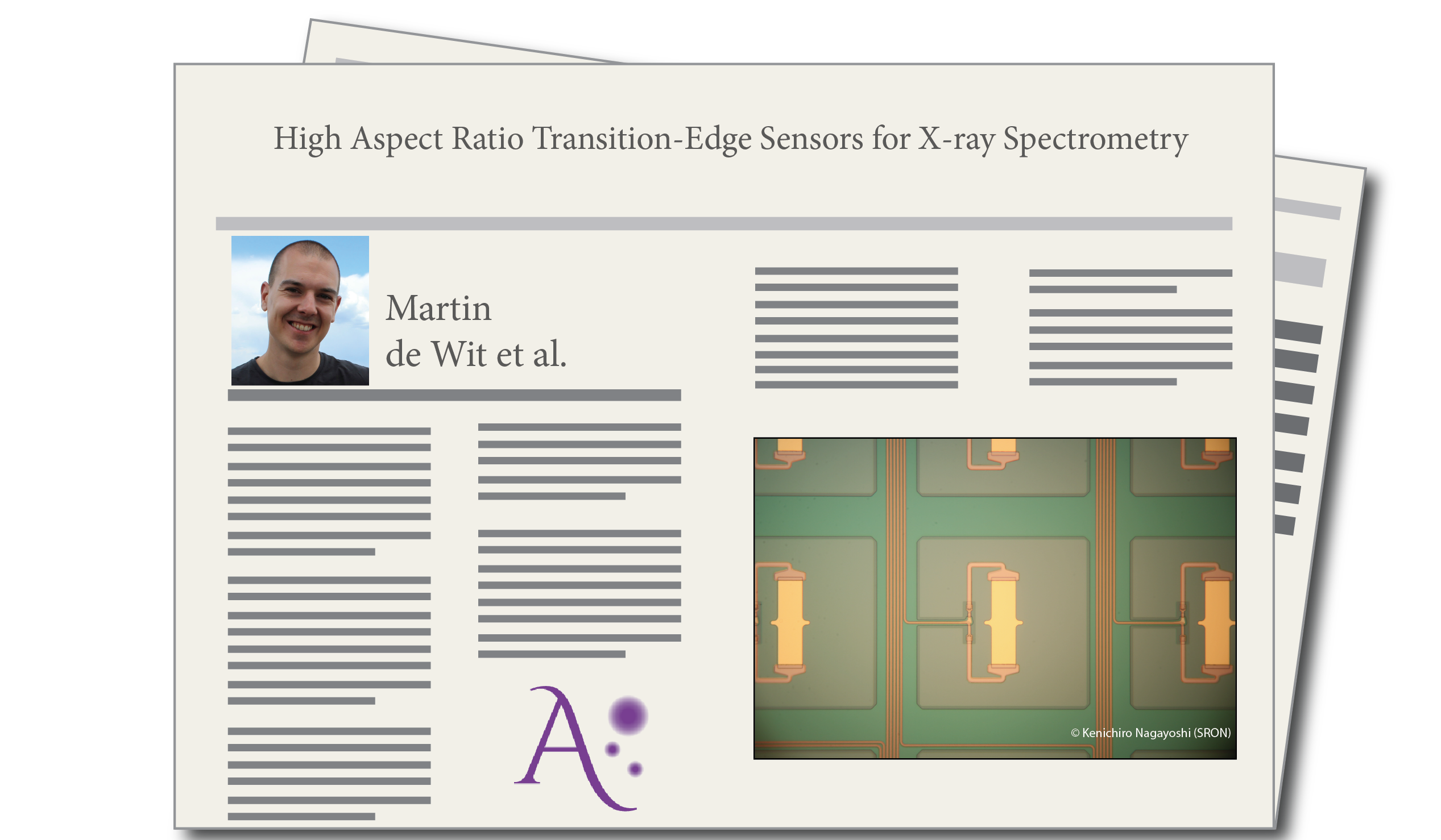
High Aspect Ratio Transition-Edge Sensors for X-ray Spectrometry

By Martin de Wit
We are developing large Transition Edge Sensor (TES) arrays in combination with a frequency domain multiplexing readout for the next generation of x-ray space observatories. For operation under an AC-bias, the TESs have to be carefully designed and optimized. In particular, the use of high aspect ratio devices will help us to mitigate non-ideal behavior due to the weak-link effect. In this paper, we present a full characterization of a TES array containing five different device geometries, with aspect ratios (width:length) ranging from 1:2 up to 1:6. The complex impedance of all geometries is measured in different bias configurations to study the evolution of the small-signal limit superconducting transition parameters α and β, as well as the excess noise. We show that high aspect ratio devices with properly tuned critical temperatures (around 90 mK) can achieve excellent energy resolution, with an array average of 2.03+0.17 eV at 5.9 keV and a best achieved resolution of 1.63+0.17 eV. This demonstrates that AC-biased TESs can achieve a very competitive performance compared to DC-biased TESs. The results have motivated a push to even more extreme device geometries currently in development.
In more general terms: In order for Athena’s X-IFU instrument to meet its scientific goals, the pixels of the instrument are subject to some very challenging requirements, such as a very high energy resolution for X-rays with energies between 1-10 keV, the right speed or count rate so that high intensity sources can be studied, a good matching to the electrical circuit used to readout thousands of pixels at once, and many others. To achieve these requirements, we have studied a number of pixel designs with relatively high aspect-ratios compared to the conventional pixel design in order to figure out what is the most suited design for X-IFU. We have found that the design of the pixels (i.e. the lengths and width of the pixel) are very important to achieve the right thermal properties of the detectors, and that even the most extreme aspect ratio pixels, which have some very favorable properties, can achieve excellent performance and might therefore be very interesting for the final X-IFU instrument.
Note, this paper was published when the baseline readout technique for the instrument was still FDM, not TDM. The results are in general still very relevant for the pixel development, because it has taught us how the critical detector parameters can be tuned by proper pixel design, but it takes away one of the main drivers, which was to go to high resistance pixels which work better under FDM, but are not suited for TDM.

